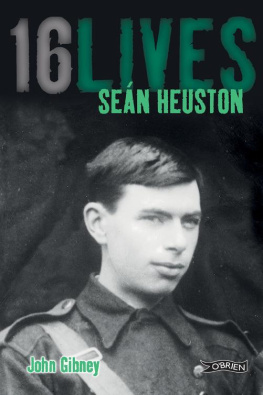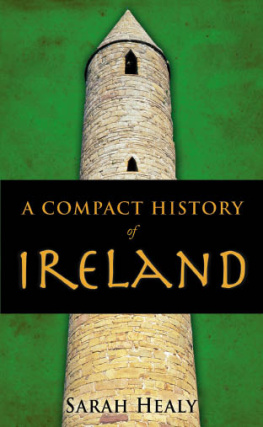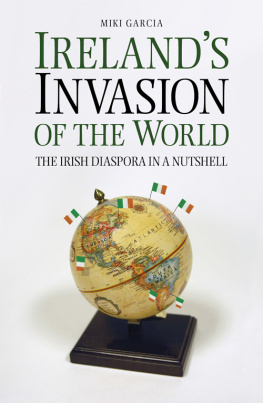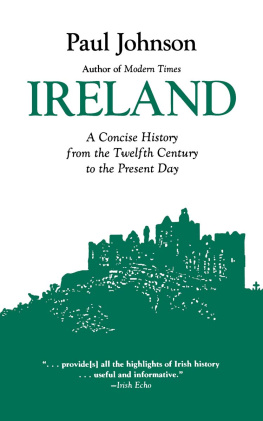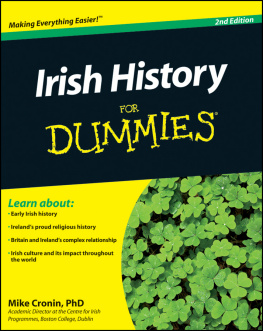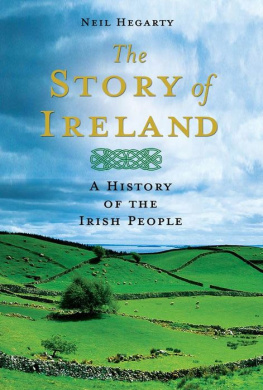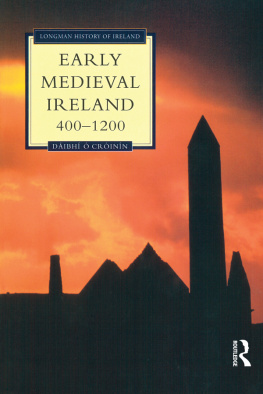A SHORT HISTORY OF IRELAND, 15002000
A SHORT HISTORY OF IRELAND, 15002000

JOHN GIBNEY


Published with assistance from the Mary Cady Tew Memorial Fund.
Copyright 2017 by Yale University.
Maps copyright 2017 by Toms Brgin.
All rights reserved.
This book may not be reproduced, in whole or in part, including illustrations, in any form (beyond that copying permitted by Sections 107 and 108 of the U.S. Copyright Law and except by reviewers for the public press), without written permission from the publishers.
Yale University Press books may be purchased in quantity for educational, business, or promotional use. For information, please e-mail (U.K. office).
Set in Janson type by Integrated Publishing Solutions, Grand Rapids, Michigan
Printed in the United States of America.
ISBN 978-0-300-20851-1 (hardcover : alk. paper)
Library of Congress Control Number: 2017941374
A catalogue record for this book is available from the British Library.
This paper meets the requirements of ANSI/NISO Z39.48-1992 (Permanence of Paper).
10 9 8 7 6 5 4 3 2 1
Contents
Acknowledgments
T HIS BOOK HAS A simple and straightforward purpose: to provide a relatively brief, accessible, and up-to-date account of modern Irish history for those who want, or need, to learn more about it. In researching and writing it I have incurred debts to a number of individuals and institutions, and would like to thank the following for offering sage advice on various sections of the text: Brian Hanley, Carole Holohan, Breandn Mac Suibhne, Ivar McGrath, Christopher Maginn, Eamon Ciardha, Brian Conchubair, Kate OMalley, Michel Siochru, Gearid Tuathaigh, Jim Smyth, and Frank Rynne. Aspects of the research and writing were facilitated by visiting research fellowships at Marshs Library, Dublin, and the Moore Institute at the National University of Ireland, Galway. I would also like to thank the staff of these institutions and of the National Library of Ireland, the Tyrone Guthrie Centre at Annaghmakerrig, County Monaghan, and Trinity College Dublin. At Yale University Press, Laura Davulis and Jaya Chatterjee have been patient and encouraging editors, and I would like to record my thanks to the anonymous referees for the press who commented on earlier drafts. Thanks are also due to Toms Brgin for preparing the maps, and to Oireas Heritage Services for generously sponsoring them. I am responsible for any errors and omissions that remain. Finally, thanks to family and friends who made this possible in so many different ways, and above all to Liza Costello and Martha Costello Gibney.
A Note on Conventions
B EFORE 1752, B RITAIN AND Ireland used the Old Style (Julian) calendar, which was ten days behind the New Style (Gregorian) calendar used elsewhere. All dates prior to 1752 have been given according to the Old Style calendar, but the year is taken to begin on 1 January rather than 25 March. Beginning in 1752, dates are given according to the New Style calendar.
The spelling used in quotations in the text has been standardized and modernized. Place names are given according to the current spelling used by the Irish Ordnance Survey, and are generally described in relation to the modern (post-1600) administrative division of Ireland into counties. Ireland is traditionally divided into four provinces, each of which corresponds to the cardinal compass points: Ulster to the north (comprising counties Antrim, Armagh, Cavan, Donegal, Down, Fermanagh, Londonderry, Monaghan, and Tyrone), Leinster to the east (counties Carlow, Dublin, Kildare, Kilkenny, Laois, Longford, Louth, Meath, Offaly, Westmeath, Wexford, and Wicklow), Munster to the south (counties Clare, Cork, Kerry, Limerick, Tipperary, and Waterford), and Connacht to the west (counties Galway, Leitrim, Mayo, Roscommon, and Sligo). The provincial divisions have been used as shorthand for geographical designations.
With regard to personal names rendered in both Irish and English, I have generally opted for the commonly used English versions. I have made an exception for writers and literary figures whose primary language of expression was Irish. This is for convenience of usage, and should not be construed as a value judgement. The names have been standardized wherever possible according to the versions used in the Royal Irish Academys Dictionary of Irish Biography (Cambridge, 2009). Unless otherwise indicated, all biographical details have been taken from the Dictionary of Irish Biography and the Oxford Dictionary of National Biography (Oxford, 2004). Throughout the text Ireland is taken to mean the entire island of Ireland prior to 1920, and unless otherwise indicated the independent state that existed after 1922 (including the Irish Free State). Northern Ireland is the official term for the six countiesAntrim, Armagh, Down, Fermanagh, Londonderry (or Derry), and Tyronethat were given separate jurisdiction within the United Kingdom after 1920, and is used accordingly.
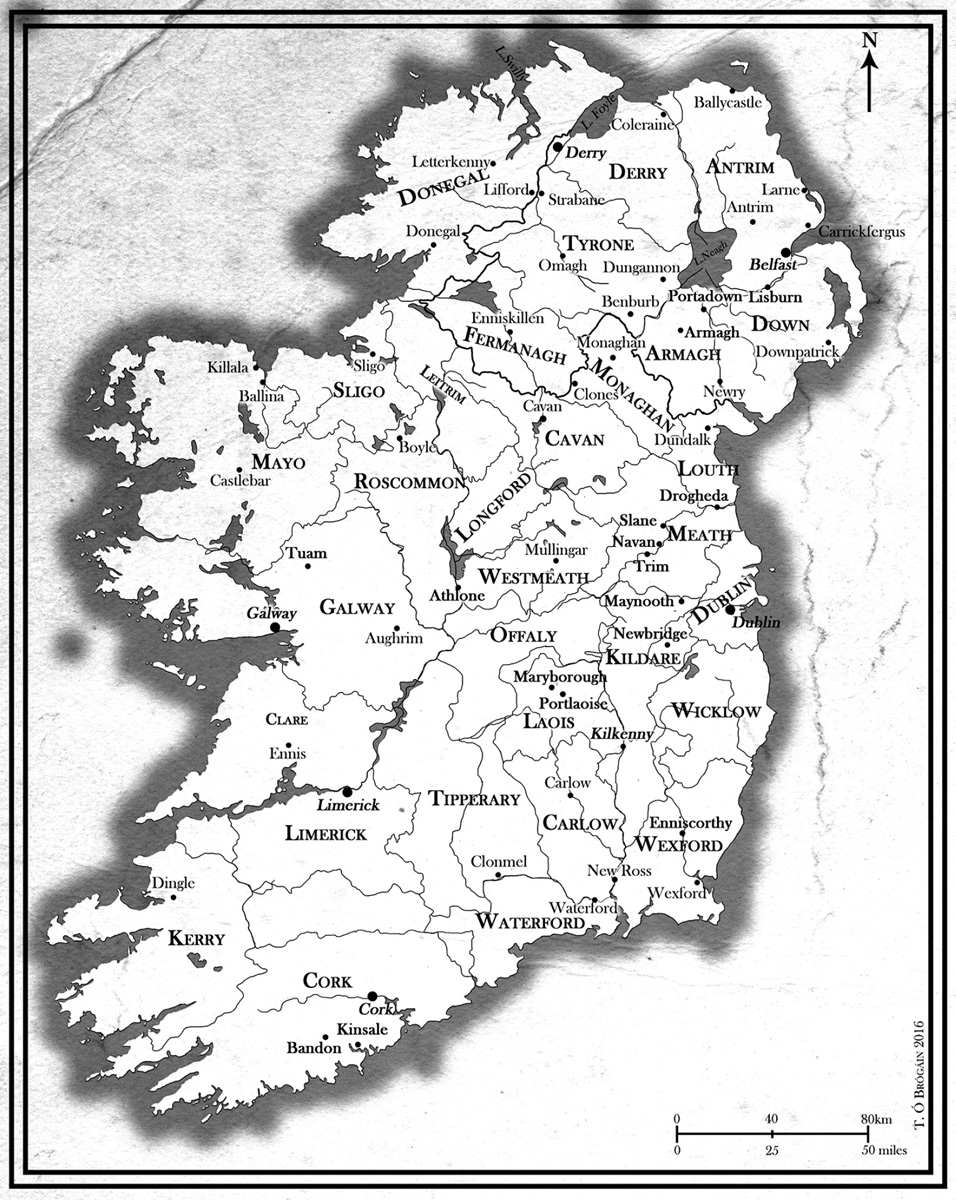
The island of Ireland, showing political boundaries and urban areas, with the main cities in italics. Technically, Ireland has only a handful of cities, arising from the status granted to certain urban areas from the Middle Ages onwards. The majority of urban areas are categorised as towns, regardless of size. (Map by Toms Brgin)
Chronology of Key Events
1534 | Kildare Rebellion |
153637 | Reformation Parliament sits in Dublin |
1541 | Act for the Kingly title formally declares Henry VIII king of Ireland |
1556 | Plantations established in Irish midlands |
1560 | Second Reformation Parliament held in Dublin |
15801584 | Desmond Rebellion, leading to plantation of Munster |
15961603 | Nine Years War |
160910 | Establishment of Ulster Plantation |
1641 | Rebellion against British Protestant settlers in Ulster |
1642 | Establishment of Catholic Confederation, based in Kilkenny |
164953 | Reconquest of Ireland by English Parliament |
165457 | Cromwellian confiscations of Catholic-owned land |
1660 | Restoration of monarchy in England, Ireland, and Scotland |
166265 | Restoration land settlement |
168991 | Jacobite-Williamite War |
1695 | Initial implementation of new Penal Laws directed at Catholics |
1704 | Sacramental test bars Protestant dissenters from public office |
1720 | Declaratory Act permits British parliament to legislate for Ireland |
174041 | Famine |
1760 | Formation of Catholic Committee to lobby for Catholic rights |
Next page



